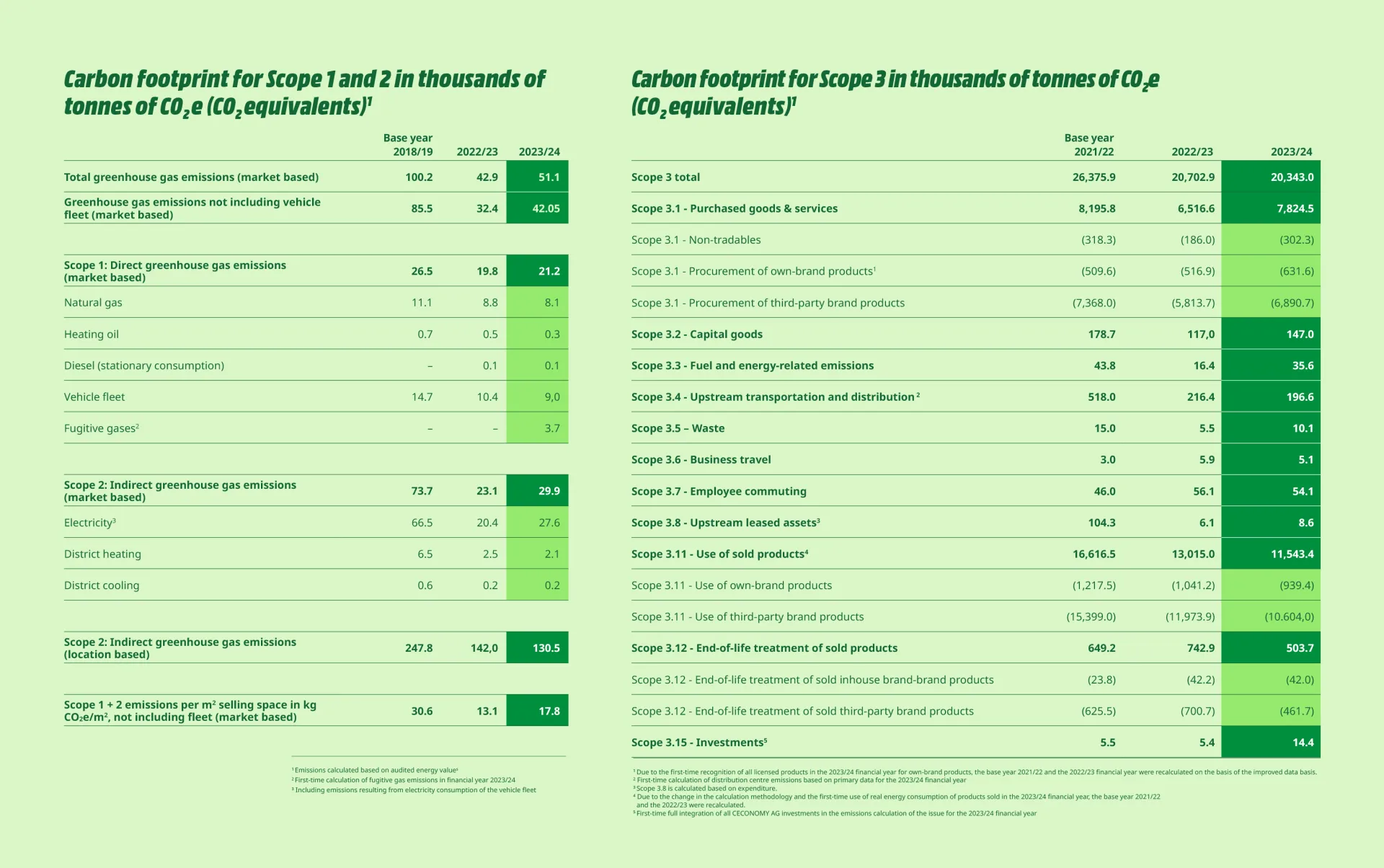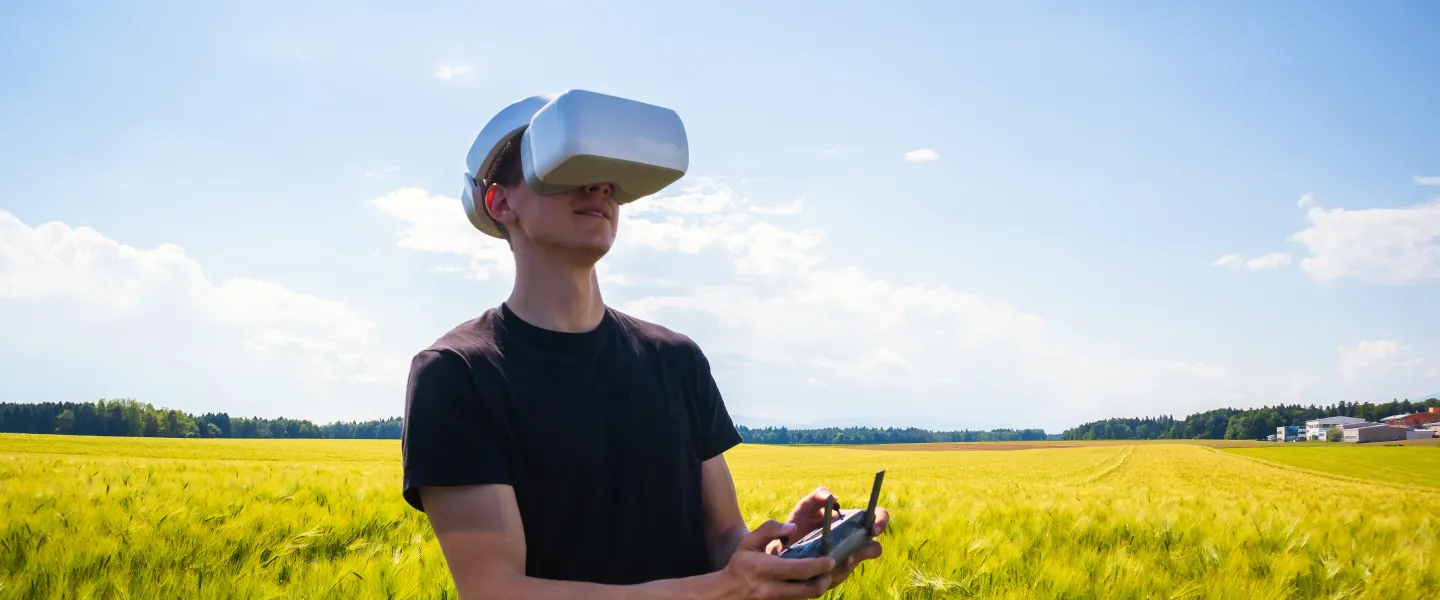Climate protection
We take responsibility for CO2 emissions that arise directly or indirectly along our value chain as a result of our business activities. In order to reduce our ecological footprint, we continuously optimise our operating processes and enable our customers to use consumer electronics in a more climate-conscious way. In doing so, we are guided by the goals of the Paris Climate Agreement to limit global warming.
Our climate targets are clearly defined:
- We want to source 100 per cent of our directly purchased electricity from renewable energies every year.
- We want to reduce our absolute Scope 1 and 2 emissions (direct and indirect greenhouse gas emissions) by 58.8 per cent by the 2032/33 financial year, starting from the base year 2018/19.
- We want to reduce our absolute Scope 3 emissions in Category 4 (Upstream transport and distribution), Category 1 (Own brands) and Category 11 (Purchased goods and services and use of products sold) by 32.5 per cent by the 2032/33 financial year, starting from the base year 2021/22.
- We want to reach more than 80 cities with zero-emission delivery capability by the 2025/26 financial year.

Our Scope 1 and 2 emissions result from energy consumption in our own business - primarily from the electricity purchased for the operation of our stores. We are continuously improving our energy balance through the ongoing modernisation of our stores and administrative buildings and efficient energy management. However, most emissions are generated in Scope 3 - primarily through the energy consumed when using the products we sell. We therefore rely on a growing range of energy-efficient products and work closely with our suppliers to drive forward the development of energy-efficient products.
All measures to reduce our carbon footprint can be found in our current sustainability report.
Equalisation projects
As part of the Beyond Value Chain Mitigation (BVCM) approach, we voluntarily make a contribution to global climate protection - in addition to our own emission reductions. Through the targeted purchase of high-quality CO2 certificates , we are currently offsetting 51,000 tonnes of CO2 - this corresponds to the remaining emissions from Scope 1 and 2 that we are currently unable to avoid. To ensure the integrity and effectiveness of the CO2 certificates, we have defined strict selection criteria and selected the following projects:
Propagating Household Biogas Projects
In Uttarakhand, India, firewood is the main source of energy for households, leading to deforestation and a negative impact on agriculture. To counteract these problems, 10,400 biogas plants are being installed in private households using animal dung as fuel.
Safe Drinking Water for Schools in Africa
The Safe Water Programme supplies schools in Nigeria and Kenya with modern water treatment technologies that also work without a power or water connection. As there is no need to boil water, firewood is saved. The project has already reached more than 50,000 schools and aims to support tens of thousands more by the end of 2025, resulting in annual emissions savings of around 2 million tonnes of CO2e.
Italy Val Dogà
The small hydropower plant in Honduras with a capacity of 13.8 megawatt hours is an example of sustainable hydropower. It supplies around 25,000 households with clean energy and replaces fossil fuels. The benefits include the stabilisation of the local power grid, the electrification of four villages and the creation of jobs.
Circular Rural Poultry Farms
The plant in the Indian region of Andhra Pradesh is fuelled by poultry waste and feeds renewable electricity into the grid. This replaces electricity from thermal power plants, which reduces emissions and promotes the expansion of the renewable energy industry. As the poultry waste is collected instead of rotting in open fields, odour and hygiene conditions in the surrounding villages are improved, while the jobs created by the plant help to boost the economy.



